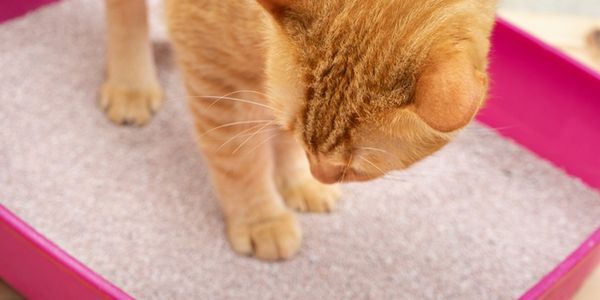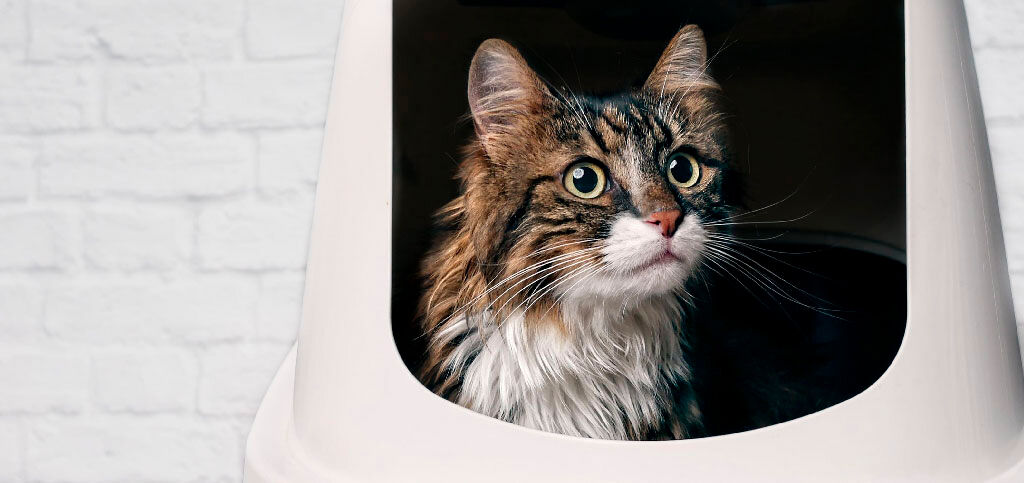Instructions for choosing and positioning your cat’s litter tray
In the house, we’re the ones who need to give our cat a suitable litter tray and place it somewhere he’ll feel comfortable using it. Making a mistake here could lead to your cat urinating or defecating outside the tray.
You need to remember that for your cat, toileting is a time of maximum vulnerability. So you should always choose a place he feels safe, comfortable, and from where he can make a quick getaway if something frightens him.
1. Shape and size
Covered litter trays give a greater sense of security, but some cats reject them because they limit the chances of escape.
Some litter trays have an entry door that the cat needs to push to get in. This can sometimes prove an obstacle for cats that are very old, or are insecure.
It can be a good idea to experiment – if you usually use an uncovered tray, try using a cover, or vice versa. This way you’ll be able to see what your cat likes best.
In terms of size, your cat needs a litter tray that’s big enough for him to dig freely both before and after urinating or defecating. Your choice will therefore depend on how big your cat is.
2. The position of the litter tray
You need to position your cat’s litter tray in a quiet place that’s easily accessible. Cats, like people, prefer privacy and calm when it comes to their toileting needs:
- If the litter tray is positioned in a place that’s exposed to people passing by, the dog, visitors etc., your cat will feel too vulnerable to use it and will look for an alternative.
- Don’t put the litter tray next to the washing machine, or any other noisy household appliance.
- It’s best to choose a quiet corner where you cat will only need to look in one or two directions to keep an eye on his surroundings while he does his business.
- Lastly, remember to place the litter tray well away from your cat’s water and food bowls.
3. How often should you clean your cat’s litter tray?
The Group of Specialists in Feline Medicine (AVEPA/ GEMFE) recommend that you replace the litter every other day, and spot clean the tray on a daily basis.
For cleaning the tray, the recommendation is to use a gentle detergent and hot water, or a suitable disinfectant. Make sure that you rinse the tray well before putting it out for your cat to use again.
It’s not a good idea to use disinfectants that cloud the water, as they usually contain phenols, which are toxic to cats.
If you’re preparing your house for welcoming a new cat, bear in mind this warning from the experts at GEMFE:
“Cats that are learning to use the litter tray need to fix it in their minds as an appropriate place for them to do their business, and cleaning too often can weaken this association.”
4. Which type of litter should you choose?
Currently there are four kinds of cat litter on the market: clumping clay, non-clumping clay, those based on silica gel, and cat litter made from vegetable fibres. Any of these can be good, but the basics to bear in mind are:
- In general cats tend to prefer fine-textured litters (that don’t get stuck in their paws) that are unperfumed.
- Using perfumed litter may be great for you, but many cats really don’t like this sort of smell, so they may refuse to use it.
If you’re concerned about the environment, natural litters can be a good choice, they have good clumping properties, and are made from materials such as cellulose, wood chips, barley or corn. They’re unperfumed, and are usually both biodegradable and compostable.
If you want to change the type of litter you use, gradually mix the new one with the old for a week, and see how your cat reacts. Always make sure that there’s enough litter in the tray for your cat to dig and cover his business..

Reasons why your cat might stop using his litter tray
If you cat was using his litter tray regularly but has now stopped doing so, it could be for one of the following reasons:
- Lack of hygiene: try changing the sand more often.
- Wrong location: look for a new location for the tray.
- Your cat doesn’t like the type of litter used: gradually introduce a different type of litter and see how your cat reacts.
- Insufficient litter: your cat may prefer to have more litter for digging into.
- Difficulty accessing the litter tray: if your cat is very shy and his litter tray is covered or has an access door, this could be an issue. Or if he’s very old and the tray is too deep, he may have a hard time getting in.
- Negative associations: Occasionally a cat may decide to avoid the litter try because he associates it with a bad experience. Changing the location of the tray can sometimes help to solve the problem.
- Stress: one of the first obvious symptoms of stress in cats is improper disposal, i.e. urinating and defecating outside the tray. Check to see if there may be something in the environment that is stressing your feline (building work, changes in family routine, the arrival of a baby, etc.).
- Disease: once the above causes have been ruled out, if your cat is still not using his litter tray, consult your vet to rule out any organic causes such as Feline Lower Urinary Tract Disease (FLUTD).
 Copy link
Copy link
 Publish on Facebook
Publish on Facebook
 Publish on Twitter
Publish on Twitter
 Publish on WhatsApp
Publish on WhatsApp
